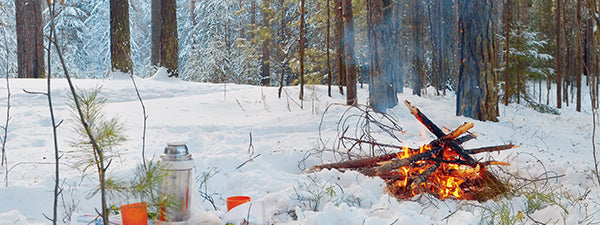
Serious survivalists will venture out into the wild during the hard winter months. They will face many more dangers and hardships than if they were venturing out in the summer. This is mainly due to the intensity of the weather and the extreme conditions that it creates. One of the most difficult aspects of surviving in the wild during winter is sourcing food, but it can be done. In this post, we will cover how to source food as a survivalist in the winter; from foraging to making a deadfall trap.
Foraging
Winter foraging is nothing like foraging in any other season. The only comparable is early spring foraging. That can be as barren as winter in some regard. However, just because it’s harder doesn’t mean its impossible.
Winter offers up some foods that are very recognizable and easy to be had.
Nuts
Nuts fall off the trees and deteriorate slowly. That’s their job. This means they will be around in the winter. Nuts like black walnut and hickory are going to be pretty easy to find if you can identify those trees.
Freshwater Mussels
Did you ever really consider protein that can be foraged. Freshwater mussels have no way of escaping you. If you can locate them, they are a great source of protein that comes at the price of getting your boots wet.
Cattails
It seems like no matter what time of year it is, you can eat cattails. That is 100% right. The starchy tuber is not very delicious, but it is going to give you energy and precious calories to carry on.
Rose Hips
Those beautiful petals will fall and the thorny bush will remain. If you look closely, where the flower once was, you will find the rose hip. After the first frost these guys will get soft and sweet. They also pack a nice Vitamin C punch.
Trapping
While animal activity is not nearly as heavy as during the other seasons, animals still get out and mostly to look for food. Even a casual observer of nature will notice that birds and squirrels come out even on some of the coldest days. They often don’t move till the sun is hitting the landscape.
You can take advantage of these sparse movements by animals. The very best way to do it is by creating a deadfall trap.
The biggest standout for survival trapping has to be the deadfall trap. The deadfall trap is extremely popular due to its simplistic design and reliability. It is a safe bet to secure food during this harsh time of year.
In an austere winter setting, you should create more than one deadfall trap. To maximize your return, you should aim to create 5-7. This is particularly important in the winter due to the decreased amount of animal activity.
Conclusion
Sourcing food in the winter is a struggle. Ideally, you will bring an appropriate amount of food with you before venturing into the wilderness during the winter. But, if you find yourself in a survivalist situation or want to test your skills at sourcing food in the wild during the harshest time of year, creating a deadfall trap or foraging will be your safest bet.
On the market for a high-quality deadfall trap? Check out our selection of traps here.





Better to just carry a few protein bars, rain gear, and an extra sweater; take a flashlight and get your butt home ASAP.
Thank you. Very informative!
You guys are the best… Really appreciate ALL you’ve done when it comes to sharing your knowledge… Keep up all the good work!!!
Thanks again,
Frank
What about other sources of proteins, like bugs? Or dormant bee hives? Would honey even be an option in winter?
Thanks
Very good ideas. Thank you very much